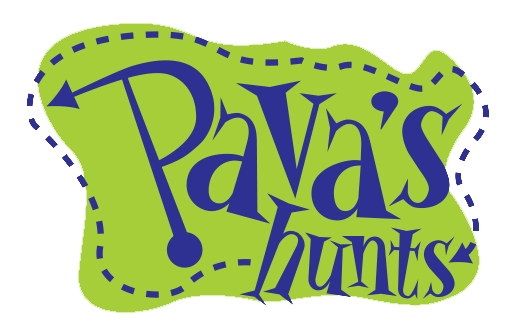TYPE OF QUESTIONS
Questions will mostly be cryptic, involving the application of general knowledge, anagrams, word play, etc. Some questions may test the participant's power of observation. Answers are normally on signboards and graffiti, or it can be the physical landmark itself such as buildings, etc. Some of the various types of questions that you may come across are: Anagram, Direct, General Knowledge, Simile, Riddles, Power of Observations, Combinations.
A. ANAGRAM QUESTIONS
An anagram is a word or phrase - the letters of which can be rearranged into another word or phrase. Anagram questions can be difficult for beginners, but it is just a matter of getting used to. Anagram questions can be identified by the following use of words or phrases within a question:
- For
- Mixed
- Multiples
- Manoeuvre
- Confused
- Hindsight
- Remodelled
- Kick
- Removed
- Broken
- Made
- Rearranged
It could be in other forms of words and phrases (in addition to the above), as long as the words or phrases indicate something to the effect of rearranging or playing of words. Anagramming of words can be the words within the question itself or the words of the answer.
B. DIRECT QUESTIONS
Direct Questions are very precise and exact. These questions require direct answers, perhaps a word or phrase with the same meaning as the question, etc.
C. GENERAL KNOWLEDGE QUESTIONS
This type of question is a test of your general knowledge. They normally relate to current affairs, music, political, film, etc.
D. SIMILE QUESTIONS
Simile questions can be statements that express the resemblance of one thing to another of a different category. Or it can be in the form of a metaphor - a statement in which a word or phrase is applied to an object or action that it does not literally denote in order to imply a resemblance. And it can also be in the form of a literal translation or the alteration or manipulation of the wordings. Simile questions normally begin with "Sounds like", "Sound as", "I hear", etc. These types of questions include cases where something has to be changed to answer for what you see for it to be the correct answer to the question. Letters to be replaced or added in a word may not be indicated by a direct letter. They can be the form of similar sounds such as:
- B: Bee
- C: Sea, See
- D: Dee
- E: Eel
- K: Kay
- L: Al
- N: Anne
- O: Zero/Love
- P: Pea / Pee
- S: Ass
- T: Tea/Tee
- U: You
- Y: Why
- W: Double U
- Z: Zee
- I: Eye
E. RIDDLE QUESTIONS
Riddles are questions, puzzles or verses phrased that ingenuity is required to decipher the answers or meanings. It could be quite tricky. In riddles, every word, sentence and phrase is a keyword.
F. POWER OF OBSERVATION
Some questions just test your power of observation. Answers can be in the form of physical landmarks; objects or graffiti. The phrasing of the questions can be in riddle or direct.
G. COMBINATION QUESTIONS
This type of question is a combination(s) of any or all of the above.
STEPS TO ANSWERING QUESTIONS
Analyse each question to determine which category it falls into. Then find the keyword(s) inside the question. Obtain the meaning of each of the keywords by referring to a dictionary, encyclopedia or other reference books. Interpret the questions to find its possible meaning and/or answer but still keep an open mind for other possibilities. Then look out for the answers on every sign and object. Find the meaning of the word on each signboard if you do not know the meaning.
Should there be more than one possible answer, repeat the above steps again. If there is a tie in opinion(s), take down the possible answers and discuss again later, to make the final decision. Once consensus is reached in the answers, take your mind off the question completely (for the time being at least) so that you can focus your attention on the next question.
Once you are sure of your answers, write down on the original answer sheet, do not wait until the end. Write your answer legibly on the answer sheet. Transfer the exact words seen on the signboards, etc. Write the full wording and not only a part of it. For example, Restoran My Sdn. Bhd. Should be written as such and not Restoran My. Incorrect transcribing may result in not obtaining points.
If you are running short of time and still cannot find the answer, take down the possible answers and discuss it later when and if you have the time.
STEPS TO SOLVING TREASURES
Treasure questions are usually in the form of riddles or puzzles. There are no hard and fast rules on how to solve treasure questions. You will need your best thinking cap for it.
However, it is advisable to read and understand each word, read and understand each line / phrase, find the keyword(s), for they correlate with each other.
Treasures normally could be bought or collected along the route. But if you know where you can find the treasure off the route you may do so. It is always advisable to spend at least 30 - 60 minutes to solve your treasures. Stop your vehicle (if you have the time) at a convenient place to discuss with your other team members.
